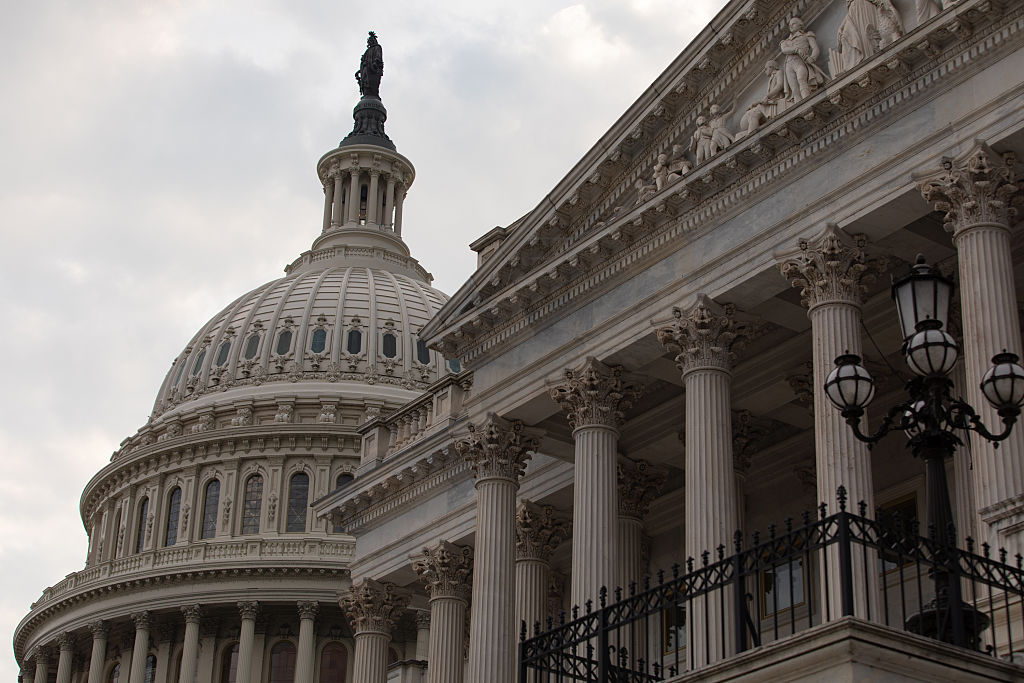After 40 days, the longest government shutdown in American history finally appears to be lurching toward an end. But even after the Senate broke its stalemate Sunday night with a bipartisan vote to advance a stopgap funding measure, it could still take most of the week before federal workers return to their jobs and shuttered agencies reopen.
[time-brightcove not-tgx=”true”]
While the Senate’s 60-to-40 vote on Sunday marked the first concrete step toward reopening the government, there are several more steps after that before any legislation will reach President Donald Trump’s desk for his signature, and critics of the deal may slow down its passage.
Since the shutdown began on Oct. 1, Democrats and Republicans have been sparring over the future of Affordable Care Act subsidies and a wave of mass federal layoffs initiated by the Trump Administration. The agreement reached Sunday would fund most federal agencies through January 30. It also includes a “minibus”—three appropriations bills that would fund veterans’ programs, military construction, agriculture, and congressional operations through September.
In exchange for providing the crucial votes needed to advance the package, eight members of the Senate Democratic Caucus secured a commitment from Senate Majority Leader John Thune for a December floor vote on extending expiring Obamacare tax credits, and a promise from the White House to reverse the firings of thousands of federal workers and guarantee them back pay.
“After 40 long days, I’m hopeful we can bring this shutdown to an end,” Thune said shortly before the vote.
The vote represented a rare moment of bipartisan cooperation in a chamber that has been paralyzed for weeks, and it sent a clear signal that the endgame is in sight. But the Senate’s work is not yet finished. Lawmakers must still approve the final version of the continuing resolution and spending package, a process that could take several more days if all 100 senators don’t agree to waive procedural hurdles.
“They’ll need unanimous consent from all senators to fast-track their final vote,” Speaker Mike Johnson said Monday morning at a press conference. “As you know, there are some procedural hurdles that one or more could throw in the way, but we certainly hope that they won’t do that, because so many people across this country are desperate for the government to reopen.”
After the final Senate vote, the legislation will move to the House, which has not convened since the shutdown began. Johnson said he will call the House to return to Washington “as quickly as possible” after the final Senate vote. “We’ll give a 36-hour formal and official notice so that we can vote as soon as possible to pass the amended CR bill and get it to the President’s desk,” he said.
The timeline, in other words, is still fluid. Even if the Senate manages to expedite its work and pass the bill as soon as Monday night or Tuesday, the House would then have to reconvene—likely Wednesday or Thursday—for its own vote.
The biggest unknown in the timeline is whether those in the Senate unhappy with the final deal do anything to slow it down. Several progressive Democrats are frustrated that the final deal includes only a promise—rather than a guarantee—of action on health care. And Senator Rand Paul, a Kentucky Republican who has repeatedly broken with his party, has threatened to delay passage over language in the measure viewed as unfavorable to the hemp industry.
Senate leaders are watching both factions warily. “It remains to be seen how quickly we can get to a final vote,” Thune acknowledged Sunday night, adding that he hoped lawmakers would resist the urge to stall progress after six weeks of gridlock.
Yet the practical realities of the standoff have become impossible to ignore. The shutdown, now entering its seventh week, has strained everything from food assistance programs to airport operations. The Agriculture Department has warned of lapses in SNAP benefits, while the Federal Aviation Administration has been forced to cancel thousands of flights to relieve overworked, unpaid controllers.

